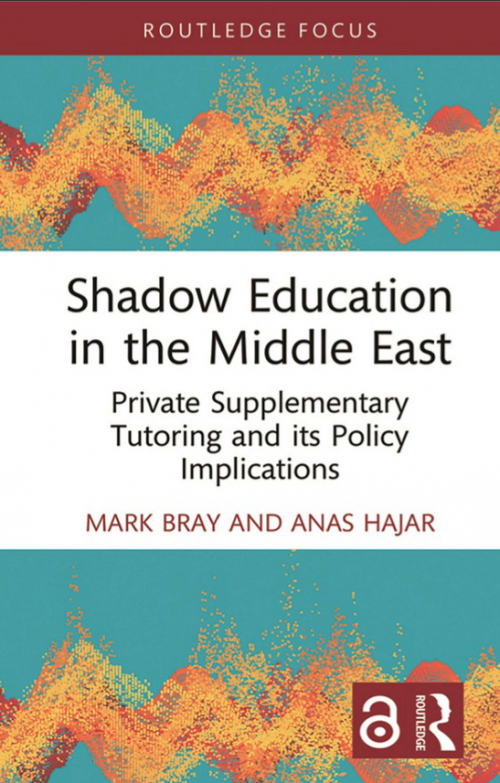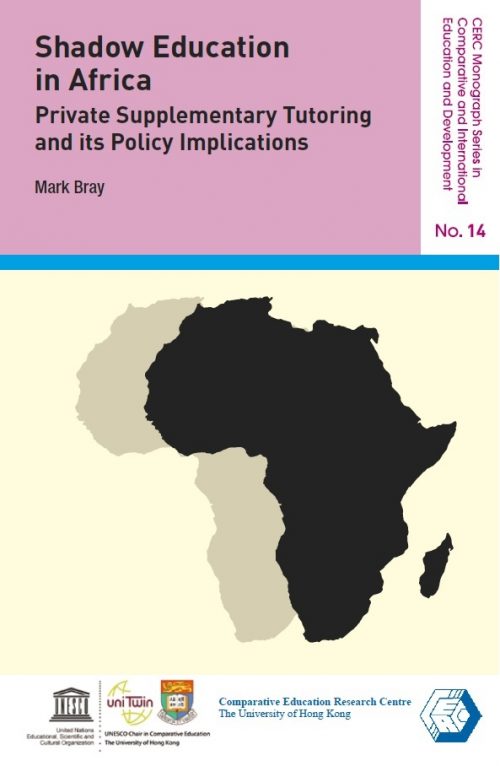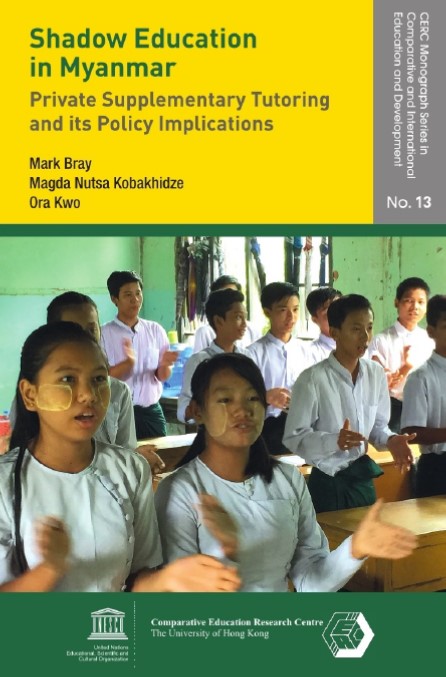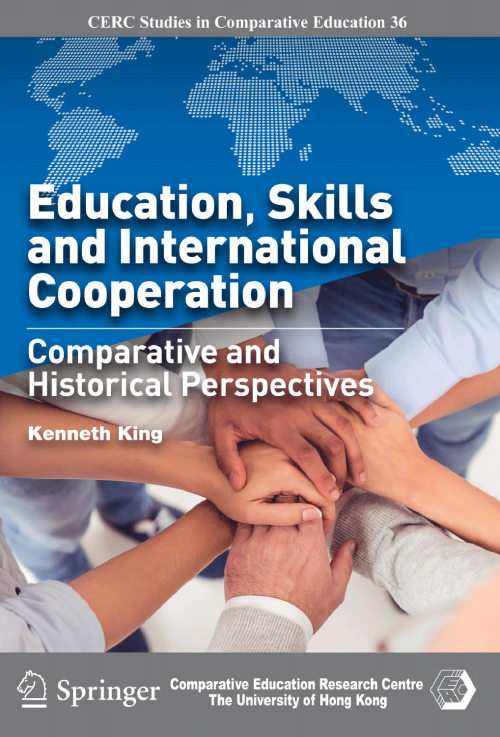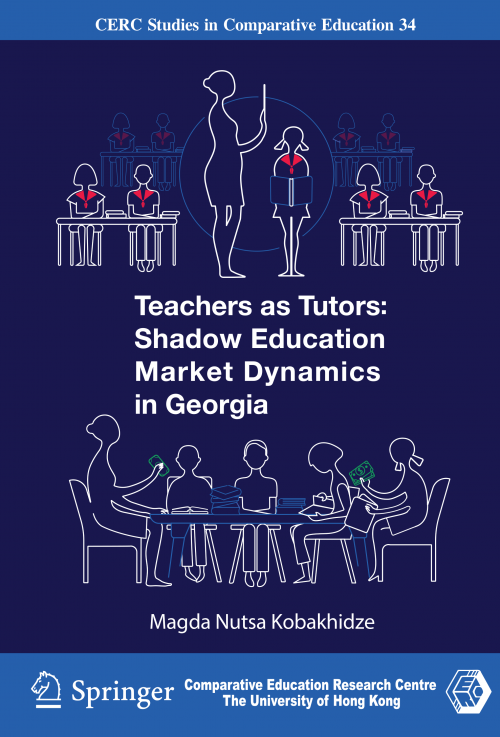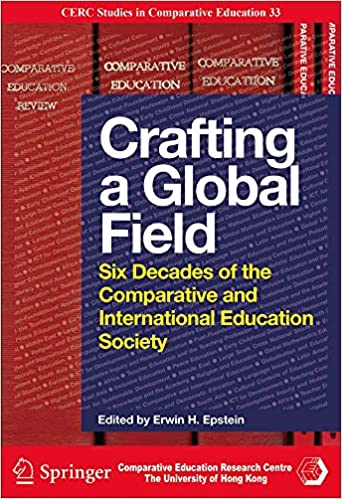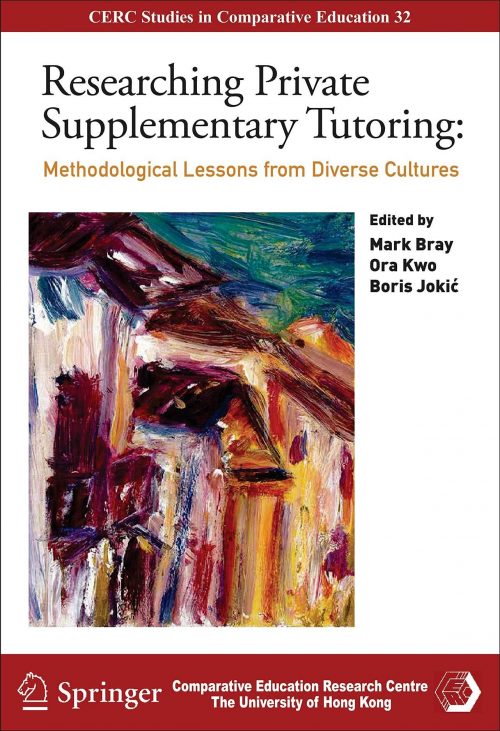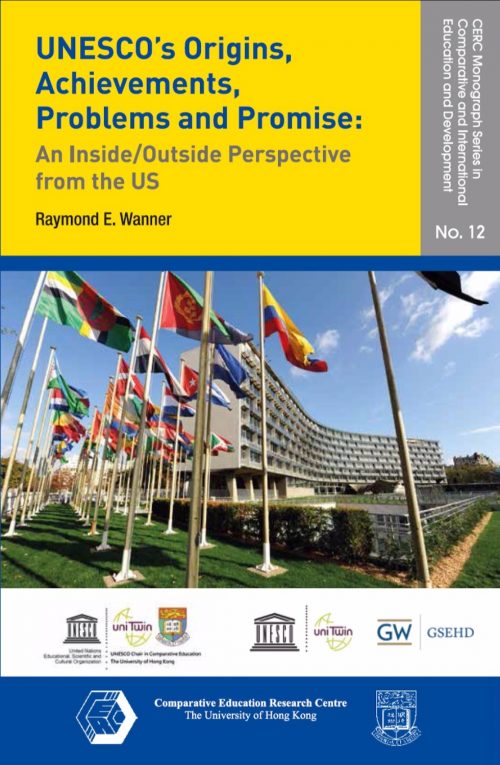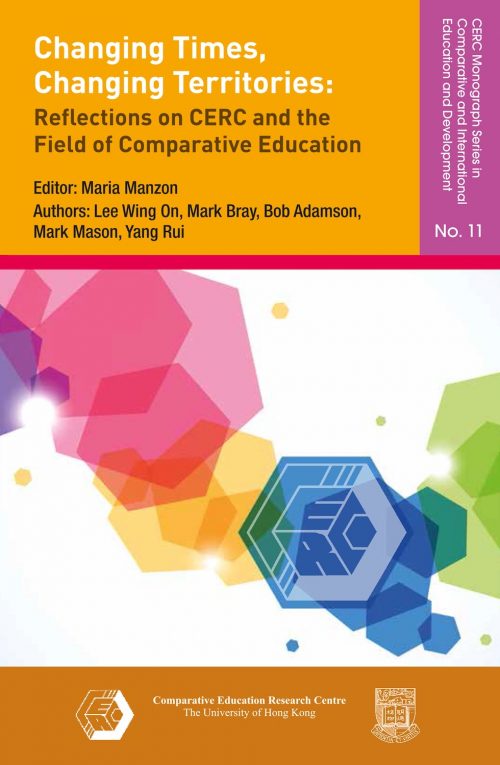Download the article:
 Academic-Praxis.2.27-33.Ruan-and-Oleksiyenko.pdf
Academic-Praxis.2.27-33.Ruan-and-Oleksiyenko.pdf
Does International Higher Education Benefit from Collaborations?
International education is argued to create better opportunities for higher learning if university program designers engage both personal and collective agency in studies of foreign languages and societies (Oleksiyenko and Shchepetylnykova, 2021), and thus increase students’ chances for greater engagement with alternative learning styles and contexts (Li, 2014; Phuong-Mai, et al., 2005). Yet, achieving a highly efficient design for cross-cultural learning is a challenge when courses prioritise technical competencies over cultural ones (Evans et al. 2009). For students holding different cultural legacies, it may not be easy to develop a common agency and authority structure in international exchange and collaboration (Mittelmeier, Rienties, Tempelaar, & Whitelock, 2018). While students may be asked to pursue joint agency in cross-cultural explorations, their personal achievements are still viewed as more important than the collaborative outcomes in an academic course (Chapman & Pyvis, 2005).
Being aware of these concerns, we conducted a pilot study for a contextualised investigation of collaborative environments in international settings in Chinese higher education. For that purpose, we examined feedback from Chinese students enrolled in one of our English-language postgraduate courses at the University of Hong Kong. Our study involved 22 Master’s degree students (13 from mainland China, 5 from Hong Kong, and 1 from each from the following countries: Canada, Cambodia, India and Tajikistan) who took the same course and completed collaborative assignments comparing historical, political, economic, organizational, cultural, and other dimensions that shape policies and operations in disparate education systems. In our report, the course is coded as Comparative Education Research Course (CERC).
This course is part of the curricula at the research intensive university, where students are expected to develop independent and inquiry-oriented thinking. In such an environment, course participants are often invited to give in-depth feedback on the nature and design of research-oriented courses. In our pilot study, the CERC participants provided their feedback by way of semi-structured individual interviews, focus groups, and online surveys, conducted upon completion of the course. They were asked to answer open-ended questions that encouraged reflection on the course design, as well as on their individual, collective and cross-cultural experiences in the CERC. Their names were coded in the reports. Based on experiential differences in our teaching practice, we exchanged analytical arguments, while questioning each other’s interpretations, and organizing the arguments to ensure a balance of cultural perspectives in the study with regard to the students’ teamwork in homogeneous and heterogeneous groups.
Learning Differences in Homogeneous and Heterogeneous Groups
CERC students reported having an “eye-opening” experience given the unique design of the course, which engaged them in comparative research and offered opportunities to learn through collaborative teamwork and cross-cultural analysis. Cross-cultural collaborations were consistently applied in the design, as students took part in various homogeneous and heterogeneous groups, in addition to exchanging their ideas and findings from in-depth investigations of a national university system of their choice. While some students preferred to focus on well-documented comparators (e.g., the US or the UK), others examined under-reported university systems. The former substantiated their choice by pointing out the ease of accessing reference materials and the abundance of available research in the field. The latter were excited to investigate a lesser known culture and system of education, and share their insights – generating a more groundbreaking discussion and unconventional questions from classmates. One student remarked:
One of my groupmates chose Morocco. Why? Because she used to be there. She worked there, and I think she also loves Morocco, because whenever she talked about Morocco, she was so happy. She had a lot of information. I think the countries that they chose were close to them personally. They love the country and they wanted to investigate.
CERC students seemed to benefit from both homogeneous groups and heterogenous ones. HF, originally from mainland China, elaborated on her experiences of collaborating in the heterogeneous group:
Our group members are quite diverse, from Hong Kong and overseas. We have different educational backgrounds, so we can learn from each other. For instance, LYW is a Canadian Hongkongnese, so her English and presentation skills are very good. LH, (who is from India), asked a lot of questions during our project discussions, so we could think from these aspects. And CKK was a part-time local learner, and what she thought about our projects and assignments usually differed from our graduate students’ perspectives. I think our group is so diverse and has so many different voices. The collaboration made me feel great.
However, students who worked in homogeneous groups that had few, or no autonomous or unconventional thinkers, experienced more frustration as a result of the teamwork. MJ noted that “nothing much meaningful” happened in her group, given that the students were unable to understand what they were working on in the “very loose frameworks”. ZY also remarked,
The biggest problem was that we spent a lot of time gathering information on different countries, but we couldn’t compare them. Our group had UK, US, Hong Kong and China – three countries and one region. But these systems are different in size and in institutions. Within a week, we needed to gather data individually in the first few days and then to use two or three more days to put them together. It’s hard to find something like a theory, or a framework, in which you can put everything into comparison.
The dilemma was partly resolved by having different teams research the same countries or regions, and post their findings and reflections in shared Moodle forums. CM exemplified the benefit of this by referring to CYL, who worked on analysing his home city of Hong Kong and shared his personal experiences in Moodle posts, allowing CM to pick up additional layers of knowledge. XY also noted that she drew on how LYW, who was in a separate group, analysed Canada’s education policies in her Moodle postings. By using different analytical approaches, the team members were learning from each other, as well as from their peers in other groups. However, the heterogeneity-oriented students did not like the idea of having several students in one class investigate the same country, as this reduced the scope of comparison, and bored listeners with repeated information. Several students argued that the teachers should have set a country list and disallowed repetition, making analysis and comparison more effective. None of them knew, however, that many students in the preceding years offered contrary advice.
Use of Moodle forums that were accessible to be read by all groups was appreciated by the students, who liked to compare themselves to others in the homogeneous groups. Some of these students sought to seclude themselves and work outside Moodle in self-established WeChat and WhatsApp online teams. This enabled their greater control of originality and ownership in developing analytical products. Some students also felt that they could avoid judgement by their teachers, if they used external applications. Most students viewed the Moodle-based forums as “a graded assessment,” rather than a collaborative excercise. ZY and MJ, for example, reported spending long hours on ensuring their entries in Moodle were “properly written,” which led to fatigue. Others, however, argued that posting in Moodle before and after class was honing their academic writing skills. The exercise urged them to make proper references to sources and use critical thinking to shape concise arguments that would fit the word limit. Some students also saw these Moodle posts as a way to better prepare for face-to-face discussions in the class. XY argued, “This setting allowed me … to process, sort out, and share the information”. CKK found that the online forum “let [her] learn in a transparent environment without much pressure” – in her undergraduate years, she argued, the coursework “wasn’t that open and usually was given personally”. The students’ transparent and collaborative learning process was helped along by questions and comments posted a teaching assistant, who periodically asked for clarification or elaboration on certain claims and descriptions in the Moodle posts.
Most students reported positive outcomes from having to work on presentations jointly and learn from each other’s presentation strategies. They emphasized improved presentation skills, including the use of technology and public speaking, as well as developing meta-learning skills (e.g., time management and learning strategies). Students also remarked that they learned from differences in their groupmates’ approaches to organizing the presentations. While working in teams, they interacted and internalized what they thought was useful for shared data collection, analysis, and synthesis. Those who had stronger fluency in spoken English were more confident about their presentations in class. Less advanced English speakers, however, had difficulty listening to their peers’ presentations, as they rehearsed their own speech in their heads. This evident lack of attention was regarded as disrespectful by their peers, who sometimes retaliated with inattention. Without sufficient time to digest insights from their peers’ presentations, some learners presented only for the sake of course assessment requirements, rather than to learn from each other’s cultural investigations. Meanwhile, those who tried to provide too many details often exceeded the time limit, and thus encroached on time alotted for their peers and teachers to converse in more depth, widening the scope beyond a single country analysis.
While independent and academically-advanced students thrived as a result of the CERC’s collaborative learning design, their less confident counterparts faced challenges and argued in favour of having greater structuration and coordination of the teamwork. Direct instruction was perceived by the hesitant and less advantaged students as being more efficient. For example, some students found it difficult to independently choose the country that they would analyse throughout the course. Others were unable to make autonomous judgments regarding what constitutes relevant information in the policy texts of the investigated country. Furthermore, they did not know what to present online or in class. One student remarked:
For the online forum, I prefer if the facilitator suggested some points or units of analysis to be followed by the students for each topic, while encouraging the students to add what they find useful also. This would guarantee the possibility of comparison, assure that students are uploading related contribution, and make the class presentation more informative.
Having observed these challenges, both teachers and students sought to improve their interactivity. Some students, for example, decided to be more selective in their analyses. CKK said that she “read the [required] reading materials [in the course outline] first to get the basic concept” every time. As a part-time student, she had little time for preparation, but tried her best to finish at least one required reading very carefully. “If they are listed under the topic, they are quite important. I also searched for some keywords and saw what kind of messages they deliver”, she said. It echoed with Biggs’ (1991) findings about Hong Kong students as adept at indentifying cues to meet the assessment requirements. Some students, however, did not read the required reading first. They tended to explore the Internet and get basic information about the country. Some started with informal channels such as Wikipedia, YouTube, and news articles to get basic orientation in the relevant terminology, and then moved on to official and academic sources. In relation to non-academic sources, the students who were determined to examine underdocumented cases reached out to agencies in their target countries when sufficient data were unavailable online (instead of dropping the selected country in the middle of the course, as some other students did). In working to succeed in the cross-cultural investigations, these students also strengthened their own networks with external agencies.
Moreover, the more ambitious students approached the teachers after classes seeking more comments and insights. The teachers also sent emails to students and to each other, looking for advice on improving collaborative strategies and providing more resources to students who needed support. In dysfunctional teams, students were encouraged to take turns at leadership, in order to contribute and share equally. They discussed the presentation at the very beginning of each week and appointed one or two members to be leaders in each session. In CY’s team, “the leader was responsible for organizing the discussion and doing the presentation in the class, and others cooperated with the leader and were welcome to give suggestions”. Group members set deadlines to post the findings online within the group. SYT’s group decided, “for example, basic links should be posted on Tuesday evening, and the analytical essay should be posted on Wednesday evening”. In this way, they mitigated the difficulty of engaging all group members in synchronous discussion and agenda coordination. Within a more homogenous group with all full-time mainland Chinese members, students cooperated more closely and discussed frequently. They decided not to have a specific leader, and instead “discussed and confirmed each aspect of the comparative framework through calls in WeChat.” XY said, “I truly felt it was a very collegial and friendly atmosphere for us to collaborate”.
What Do We Learn from This Study?
Collaborations are essential for learning across cultures, and opportunities for learning are achieved in both homogeneous and heterogeneous groups. Students learn from differences that they observe in disparate settings. At the same time, multicultural environments tend to stimulate a range of questions and anxieties that encourage a variety of interactions and exchanges helping research-oriented students learn from each other’s behaviours, choices, strategies and outcomes.
Our pilot study shows that Chinese learners participating in a research-oriented course tend to differ in what they learn within homogeneous and heterogeneous teams. Homogeneity appeared to be a more attractive arrangement for the Chinese learners preoccupied with performance and achievement of high results. Their contributions to heterogeneous teams depended on their confidence to do independent research and speak English, as well as on their previous experiences of interaction with international peers. Regardless of whether they were in homogeneous or heterogeneous groups, both Chinese and non-Chinese students expressed anxiety about performance and assessment, especially when ambiguity about assignments was high. In the research-oriented environment aimed at stimulating independent thinking, Chinese students appeared to be facing the same challenges as learners from other cultures in view of lingering uncertainties (Brugnach & Ingram, 2012). Indeed, for many of these students, ambiguity was shaping personal skills related to working collaboratively and learning from each other. Yet, it seems that anxieties diminished only when there was a sufficient number of teammates who had the confidence to do research, communicate their choices, and support others.
Our pilot study suggests that the collaborative design in international settings achieves a satisfactory result for those students who can find a balance between individual and collaborative agencies, spaces and strategies. Student agency and autonomy allowed CERC learners to conduct in-depth, self-organized investigations, while teamwork spearheaded sharing of reflections and constructivist approaches. Chinese students who had previous experiences in heterogeneous learning environments were ahead of their counterparts, who were new to cultural differences and communication divergences. The latter often hesitated to say if they indeed benefitted fully from individual assignments, self-direction and autonomous choices. Many required continuous scaffolds for learning and preferred a more directive supervisory style (as discussed in Jung [2018]).
Students moving from homogeneous to heterogenous learning settings reported experiencing anxiety, while being urged to embrace enhanced research autonomy and critical thinking. Chinese students, and those from East Asia with Confucius Heritage Culture (e.g., Japan, Korea, Vietnam), as well as some cultures in South Asia (e.g., India, Pakistan) predominantly relied on expository teaching and rote-learning before joining the university (as discussed in Valiente [2008]). Learning in the homogeneity-oriented communities of the East is often viewed as putting relatively little emphasis on critical examination of ideas and sources. In environments where Eastern and Western approaches to learning collide, participants, especially those with limited knowledge of the field of international higher education, or those preoccupied with examinations and tests, appear to expect more direction from their teachers in order to avoid uncertainties (this was also noted by Phuong et al. [2005]). However, it should be noted that CERC students’ internal motivation to participate in group learning activities remained relatively stable, especially when they found the learning tasks were worth doing (this correlates well with findings of Lee & Yang [2020]).
Earlier empirical studies also showed that students from Hong Kong were much more adept in collaborative learning than it might have appeared in other reports (Biggs, 1991; Chapman & Pyvis, 2006). They were reported to either adopt the deep approach (interest-driven, content-focused) or the achieving approach (ego-enhancement-driven, context-focused) instead of only a superficial approach, as would be a common stereotype. In classrooms with collaborative learning design, Chinese students tend to improve their confidence and intrinsic motivation to master the subject (Ning & Hornby, 2014). However, when cross-cultural learning adds a layer of complexity to the program design, the Chinese participants succeed only if they are eager to engage with more sophisticated interactivity and address collaborative difficulties by applying a higher level of interest and curiosity to other cultures. As Valiente (2008) earlier concluded, when Chinese students tend to balance group harmony and synthetic thinking with individual learning, critical thinking and cross-examination may be less relevant.
At the same time, the pilot study results also remind us that the course design melding collaborative and cross-cultural types of learning needs to provide a higher level of scaffolding in order to achieve the expected learning outcomes (Hämäläinen & Oksanen, 2012). It is worth giving more attention to the alignment of learning objectives, task characteristics, instructions and assessment with learner capacities for collaboration and cross-cultural engagement. Teachers can achieve more in creating these synergies when they investigate student profiles in advance, in order to know how much learning autonomy their course participants can handle and how complex their assignments should be in a cross-cultural environment (De Hei et al., 2016). This would help avoid situations where learners who used to work in homogeneous teams become stigmatized by the major shift to heterogeneous teamwork. Research-oriented courses should nevertheless pursue the creation of challenges for learners from homogeneous environments to develop competences for working in heterogeneous organizations, which is increasingly a demand in diversity-driven workplaces and markets.
Overall, this pilot study provides important insights for developing subsequent studies on challenges in collaborative and cross-cultural learning designs in international higher education, in which homogeneous and heterogeneous teams can work and interact in the classroom and beyond. We conclude this paper by emphasising that student diversity should be given more attention in curriculum design pursuing both collaborative and cross-cultural learning. For both teachers and students, cross-cultural collaborations offer a wealth of discovery on how learning can build a profound thinker and sophisticated practitioner, and create a better environment for interactivity across dissimilar cultures. More research is certainly needed on how internationally-infused research-intensive environments that generate ambiguity can be shaped to increase understanding of values and the effects of collaborative and cross-cultural competences, which are increasingly required in a complex, interdependent and crisis-plagued world.
References
Biggs, J. B. (1991). Approaches to learning in secondary and tertiary students in Hong Kong: Some comparative studies. Educational Research Journal, 6(1), 27-39.
Brugnach, M., & Ingram, H. (2012). Ambiguity: the challenge of knowing and deciding together. Environmental Science & Policy, 15(1), 60-71.
Chapman, A., & Pyvis, D. (2005). Identity and social practice in higher education: student experiences of postgraduate courses delivered ‘offshore’ in Singapore and Hong Kong by an Australian university. International Journal of Educational Development, 25(1), 39-52.
Chapman, A., & Pyvis, D. (2006). Dilemmas in the formation of student identity in offshore higher education: A case study in Hong Kong. Educational Review, 58(3), 291-302.
De Hei, M., Strijbos, J.-W., Sjoer, E., & Admiraal, W. (2016). Thematic review of approaches to design group learning activities in higher education: The development of a comprehensive framework. Educational Research Review, 18, 33-45.
Evans, E., Tindale, J., Cable, D., & Hamil Mead, S. (2009). Collaborative teaching in a linguistically and culturally diverse higher education setting: A case study of a postgraduate accounting program. Higher Education Research & Development, 28(6), 597-613.
Hämäläinen, R., & Oksanen, K. (2012). Challenge of supporting vocational learning: Empowering collaboration in a scripted 3D game–How does teachers’ real-time orchestration make a difference?. Computers & Education, 59(2), 281-293.
Jung, J. (2018). Learning experience and perceived competencies of doctoral students in Hong Kong. Asia Pacific Education Review, 19(2), 187-198.
Lee, W. W. S., & Yang, M. (2020). Effective collaborative learning from Chinese students’ perspective: a qualitative study in a teacher-training course. Teaching in Higher Education, 1-17 (first online), doi:10.1080/13562517.2020.1790517
Mittelmeier, J., Rienties, B., Tempelaar, D., & Whitelock, D. (2018). Overcoming cross-cultural group work tensions: mixed student perspectives on the role of social relationships. Higher Education, 75(1), 149-166.
Ning, H., & Hornby, G. (2014). The impact of cooperative learning on tertiary EFL learners’ motivation. Educational Review, 66 (1), 108-124.
Oleksiyenko, A. V., & Shchepetylnykova, I. (2021). International students and Ukrainian universities: dilemmas of agency and change. International Studies in Sociology of Education, 1-28 (first online) DOI: 10.1080/09620214.2021.1995777
Phuong-Mai, N., Terlouw, C., & Pilot, A. (2005). Cooperative learning vs Confucian heritage culture’s collectivism: confrontation to reveal some cultural conflicts and mismatch. Asia Europe Journal, 3(3), 403-419.
Valiente, C. (2008). Are students using the ‘wrong’ style of learning? A multicultural scrutiny for helping teachers to appreciate differences. Active Learning in Higher Education, 9(1), 73-91.
To Cite This Article:
Ruan, N. and Oleksiyenko, A. (2022). Chinese Students Collaborating Across Cultures. Academic Praxis, 2: 27-33.
Other Recent Articles
 Ukrainian Academics in the Times of War On February 24, 2022, Russia launched a brutal full-scale war of aggression against Ukraine. Eight years after the invasion of the Crimea and Donbas, the Russian government acted on Vladimir Putin’s assertions that Ukraine is not (and should not be) a country – a view deeply ingrained in propaganda-addled Russian popular opinion, to attempt to obliterate the Ukrainian state and identity. The Russian army has been bombing Ukrainian cities, including residential areas, universities and schools.… Read more
Ukrainian Academics in the Times of War On February 24, 2022, Russia launched a brutal full-scale war of aggression against Ukraine. Eight years after the invasion of the Crimea and Donbas, the Russian government acted on Vladimir Putin’s assertions that Ukraine is not (and should not be) a country – a view deeply ingrained in propaganda-addled Russian popular opinion, to attempt to obliterate the Ukrainian state and identity. The Russian army has been bombing Ukrainian cities, including residential areas, universities and schools.… Read more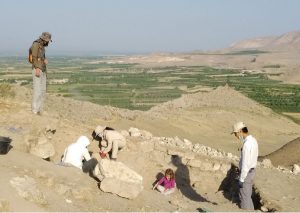 Interdisciplinary Learning in an Intercultural Setting During Archaeological Fieldwork Since archaeology studies the full spectrum of the human past, it is naturally an academic discipline that engages a very wide range of topics – spanning the humanities, social sciences, physical sciences, and technology. Often, archaeological projects also take place in international settings, with team members joining from around the world. Therefore, archaeological fieldwork offers an ideal laboratory for experimenting with interdisciplinary learning in intercultural settings. Over the last several years, our project has engaged… Read more
Interdisciplinary Learning in an Intercultural Setting During Archaeological Fieldwork Since archaeology studies the full spectrum of the human past, it is naturally an academic discipline that engages a very wide range of topics – spanning the humanities, social sciences, physical sciences, and technology. Often, archaeological projects also take place in international settings, with team members joining from around the world. Therefore, archaeological fieldwork offers an ideal laboratory for experimenting with interdisciplinary learning in intercultural settings. Over the last several years, our project has engaged… Read more Higher education in Cambodia: Reforms for enhancing universities’ research capacities While Cambodian higher education is facing many challenges (see Heng et al., 2022a; Sol, 2021), the major issue that calls for reforms is a limited research capacity of Cambodian universities and academic staff. This problem needs immediate attention. Policy actions are required to improve the research landscape in the country and empower local academics for a more productive and impactful academic performance. In the following sections, I elaborate on my arguments Limited research output:… Read more
Higher education in Cambodia: Reforms for enhancing universities’ research capacities While Cambodian higher education is facing many challenges (see Heng et al., 2022a; Sol, 2021), the major issue that calls for reforms is a limited research capacity of Cambodian universities and academic staff. This problem needs immediate attention. Policy actions are required to improve the research landscape in the country and empower local academics for a more productive and impactful academic performance. In the following sections, I elaborate on my arguments Limited research output:… Read more Experiential Learning at the University of Hong Kong Innovation in education always starts with an idea which gradually develops into on-the-ground practices, and can then spread to different areas in an education institute. In higher education, innovation can be demonstrated in various ways. While people might relate innovation naturally with the use of new and advanced technology, curriculum can also be an area where innovative ideas are applied. In fact, as scholars have highlighted, innovation aimed at transforming the curriculum was beneficial not… Read more
Experiential Learning at the University of Hong Kong Innovation in education always starts with an idea which gradually develops into on-the-ground practices, and can then spread to different areas in an education institute. In higher education, innovation can be demonstrated in various ways. While people might relate innovation naturally with the use of new and advanced technology, curriculum can also be an area where innovative ideas are applied. In fact, as scholars have highlighted, innovation aimed at transforming the curriculum was beneficial not… Read more Innovation and Liberal Arts Education In the contemporary, globalized, neoliberal landscape of higher education, the increasingly intertwined relationship between government, industry, and universities is changing the nature and mission of higher education. The imperative of economic growth imposes new demands on the type of graduates that are needed to enter the workforce, and consequently on the priorities that universities should set. The call to innovate cannot be ignored if a university wishes to survive. Within the context of higher education,… Read more
Innovation and Liberal Arts Education In the contemporary, globalized, neoliberal landscape of higher education, the increasingly intertwined relationship between government, industry, and universities is changing the nature and mission of higher education. The imperative of economic growth imposes new demands on the type of graduates that are needed to enter the workforce, and consequently on the priorities that universities should set. The call to innovate cannot be ignored if a university wishes to survive. Within the context of higher education,… Read more Conceptualization and Development of Global Competence in Higher Education: The Case of China The notion of global competence of students increasingly raises concerns among both educational researchers and practitioners. In 2018, the PISA tests assessed global competence of 15-year-old students for the first time (OECD, 2018). According to OECD, such a multidimensional capacity has been identified as the individual ability of examining “local, global and intercultural issues”, understanding and appreciating “different perspectives and world views”, interacting “successfully and respectfully with others, and taking “responsible action toward sustainability and… Read more
Conceptualization and Development of Global Competence in Higher Education: The Case of China The notion of global competence of students increasingly raises concerns among both educational researchers and practitioners. In 2018, the PISA tests assessed global competence of 15-year-old students for the first time (OECD, 2018). According to OECD, such a multidimensional capacity has been identified as the individual ability of examining “local, global and intercultural issues”, understanding and appreciating “different perspectives and world views”, interacting “successfully and respectfully with others, and taking “responsible action toward sustainability and… Read more Quiet Leadership in Schools: A Personal Reflection This article argues for the importance of quiet, introverted leaders in international schools as a counterbalance to the extroverts who seem to make up the bulk of leadership posts in these institutions. It builds on essays by Liz Jackson (2021) and Bruce Macfarlane (2021), which explore leadership in university settings. These authors examine the de facto expectations of leaders to be outgoing and forceful, but challenge the idea of the heroic leader, suggesting that more… Read more
Quiet Leadership in Schools: A Personal Reflection This article argues for the importance of quiet, introverted leaders in international schools as a counterbalance to the extroverts who seem to make up the bulk of leadership posts in these institutions. It builds on essays by Liz Jackson (2021) and Bruce Macfarlane (2021), which explore leadership in university settings. These authors examine the de facto expectations of leaders to be outgoing and forceful, but challenge the idea of the heroic leader, suggesting that more… Read more Academic Praxis: An Editorial Note The recent special issue which I co-edited with my colleague, Liz Jackson, discussing dilemmas affecting the freedoms of speech, teaching and learning in the post-truth age (see Oleksiyenko and Jackson 2020), points to the importance of developing an academic praxis, in which each of us continually questions the purposes, processes and values of teaching, learning and inquiry. These days, I am increasingly inclined to think of higher learning as a journey of ceaseless introspection, which… Read more
Academic Praxis: An Editorial Note The recent special issue which I co-edited with my colleague, Liz Jackson, discussing dilemmas affecting the freedoms of speech, teaching and learning in the post-truth age (see Oleksiyenko and Jackson 2020), points to the importance of developing an academic praxis, in which each of us continually questions the purposes, processes and values of teaching, learning and inquiry. These days, I am increasingly inclined to think of higher learning as a journey of ceaseless introspection, which… Read more



